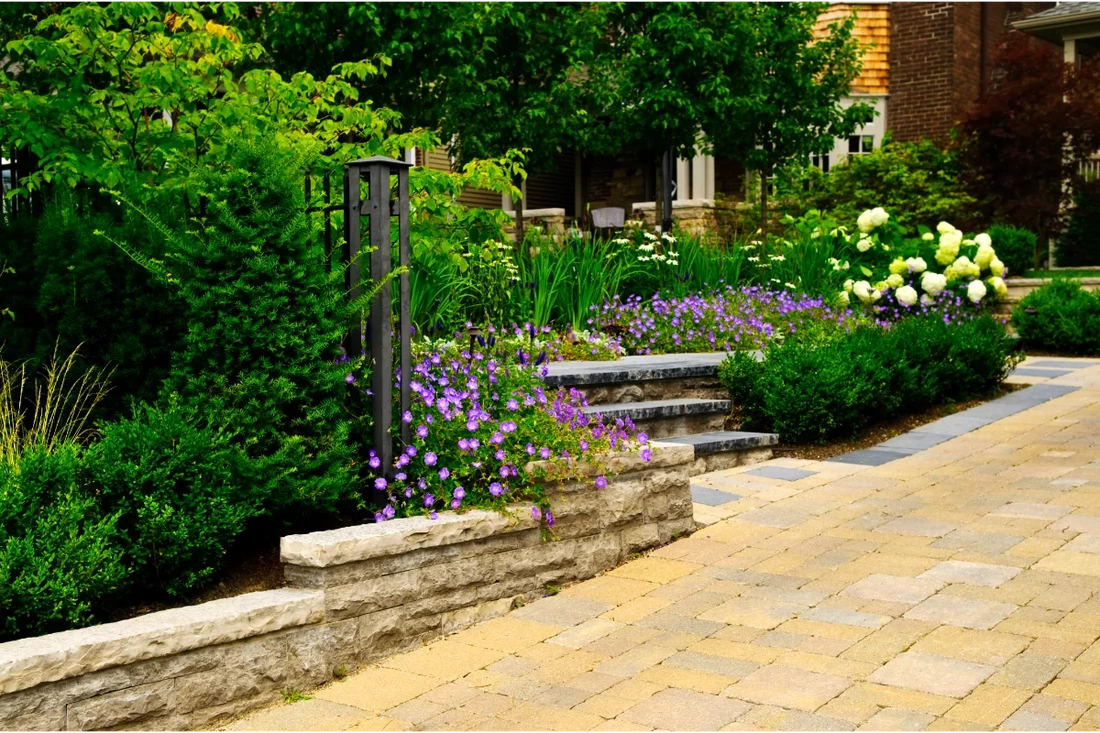|
Several factors must be considered when choosing between pavers vs concrete for your outdoor space. Comparing pavers vs concrete, both advantages and disadvantages can influence your project's aesthetics, usability, and longevity. This article will provide insight into the various elements of concrete and pavers to help you make an educated decision. Drainage ConsiderationsConcrete surfaces can lead to pooling water and poor drainage, especially in areas with heavy rainfall. Permeable pavers are an excellent alternative for better drainage as they allow rainwater to seep back into the ground, reducing runoff and flooding issues. How Permeable Pavers Improve Stormwater ManagementBy installing permeable pavers, you can effectively manage stormwater on your property. These individual paving stones feature small gaps between them that let water pass through and infiltrate the ground beneath, preventing standing water or excessive runoff. Environmental Benefits of Using Permeable Paving Stones
The permeable paving stones used in drainage considerations can help improve stormwater management and provide environmental benefits. However, durability and maintenance are essential when deciding between concrete or pavers for your project. Durability and MaintenanceWhile concrete is known for its durability, it can crack under extreme weather conditions or due to ground movement. In contrast, paving stones offer increased flexibility since individual units move independently without causing damage to the entire surface. Additionally, maintenance requirements differ between the two materials:
To ensure the long-lasting performance of your chosen material, consider factors such as climate conditions and proper installation techniques when deciding between concrete pavers vs concrete slabs. Installing pavers is an excellent option for those who want a more flexible and low-maintenance surface. Pavers come in various materials, including natural stone and stamped concrete, and can be used for multiple applications, such as a pool deck or patio. With paver installation, you can replace a single paver rather than an entire slab if damage occurs. Durability and maintenance are essential when considering concrete and pavers; however, more can be explored regarding aesthetics and design options for creatively enhancing your outdoor space. Aesthetics and design options provide additional opportunities for creativity that can help improve your outdoor space. Aesthetics and Design OptionsKelowna homeowners often undertake renovation projects for both beauty and utility purposes. Paving stones come in various patterns, styles (smooth, rustic, cobbled), and textures that provide more design options than traditional concrete slabs, which usually have a plain appearance. Some popular paver installations include:
With the variety of natural stone colors, shapes, and sizes available today, homeowners can easily customize their outdoor spaces to reflect their style while adding functionality. Kelowna Retaining Walls offers a range of options for concrete pavers, stamped concrete, and natural stone to suit any design preference. Aesthetics and Design Options provide an opportunity to create a unique outdoor space that can enhance the curb appeal of any property. With this in mind, it is important to consider repair costs and ease of repairs when deciding between pavers vs concrete. Repair Costs & Ease of RepairsBoth concrete slabs and paving stones may develop issues over time, requiring repairs. However, fixing damaged pavers is generally easier than repairing cracked or chipped concrete surfaces. This difference affects the long-term costs associated with each material choice. Common repair scenarios for both materials
Assessing cost-effectiveness when choosing between concrete vs. paversRegarding repair costs, replacing individual pavers is more affordable than addressing damage in a typical concrete slab. Furthermore, easier maintenance contributes to long-term savings when paving stones over poured concrete solutions. Repair costs and ease of repairs are two important factors when choosing between concrete and pavers. Weighing up the benefits and drawbacks of each material, in terms of cost and added value, is essential for making an informed choice. Value Addition & Cost ComparisonWhen considering pavers vs concrete, evaluating each material's long-term financial benefits and initial costs is essential. Although paving stones tend to have a higher upfront cost than poured concrete slabs, their low-maintenance nature and enhanced aesthetic value make them an attractive investment option that adds significant worth to your property while offering long-term savings.
When deciding between pavers and concrete slabs, it's important to consider the specific needs of your project. For example, if you're installing pavers, it's important to properly prepare the ground beneath to prevent ground movement and ensure a stable surface. Individual paver installation can be time-consuming and labor-intensive, so factoring in the installation cost is important. On the other hand, poured concrete slabs are typically less expensive and faster to install than pavers. However, if you're looking for a more decorative option, stamped concrete can look similar to pavers or natural stone at a lower cost per square foot. Ultimately, deciding between pavers and concrete will depend on your specific needs and preferences. Consider factors such as cost, durability, maintenance, and aesthetics when making your decision. If you're considering a pool deck, it's important to choose a material that can withstand exposure to water and chemicals. For example, pavers and poured concrete slabs can be suitable for a pool deck, but selecting a non-slip surface is important to prevent accidents. Contact us today to learn more about our services and how we can help you with your next project. Comments are closed.
|

 RSS Feed
RSS Feed